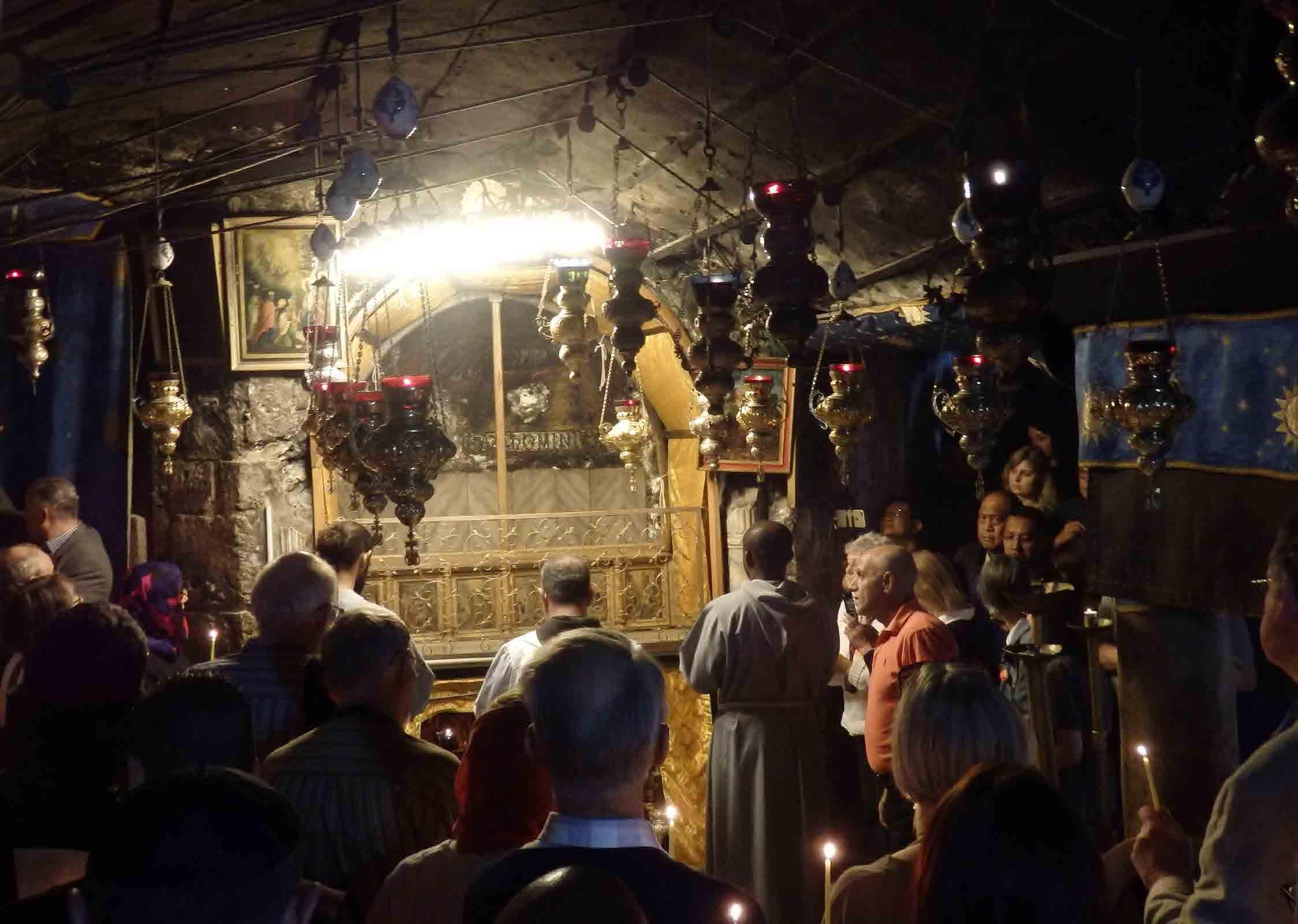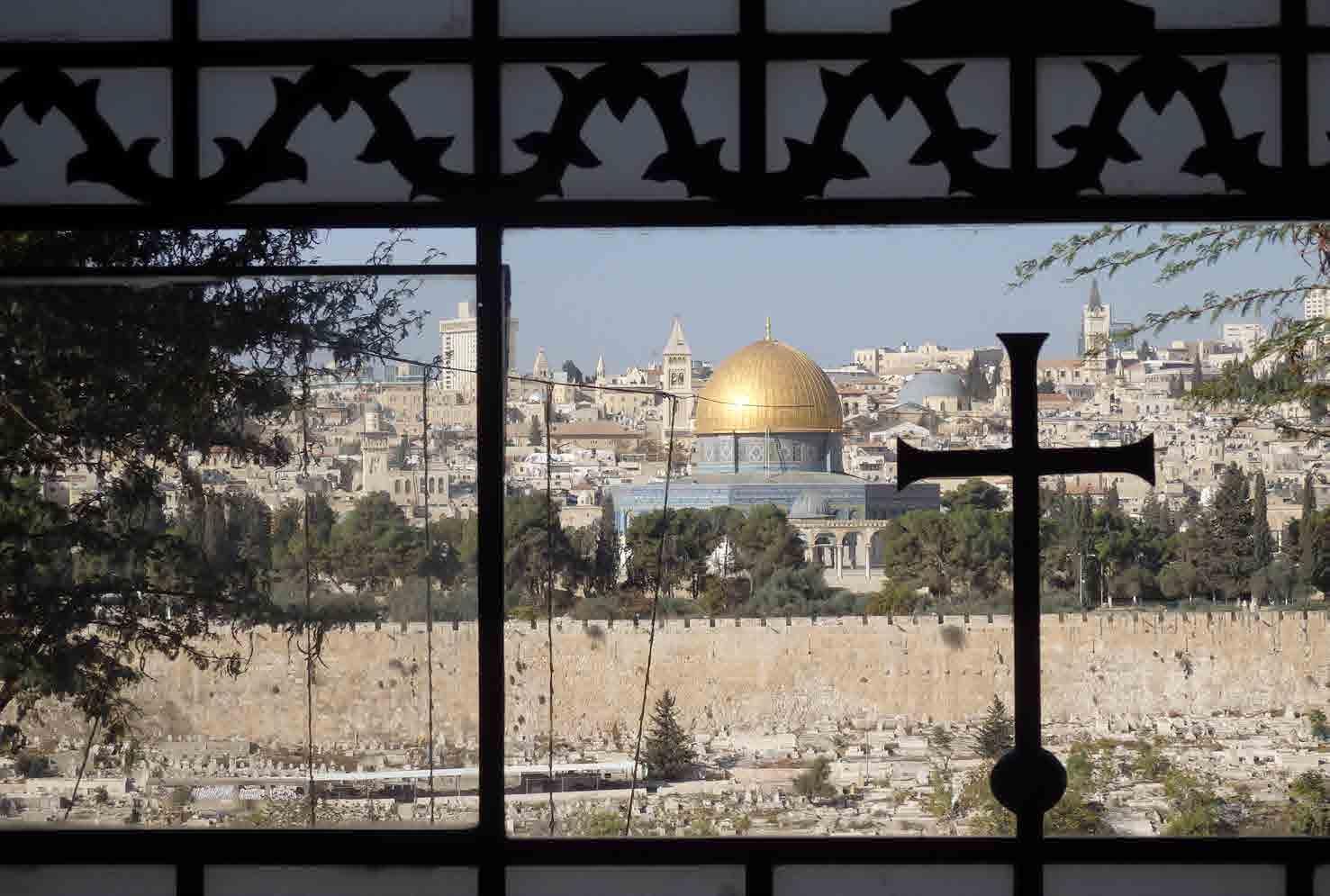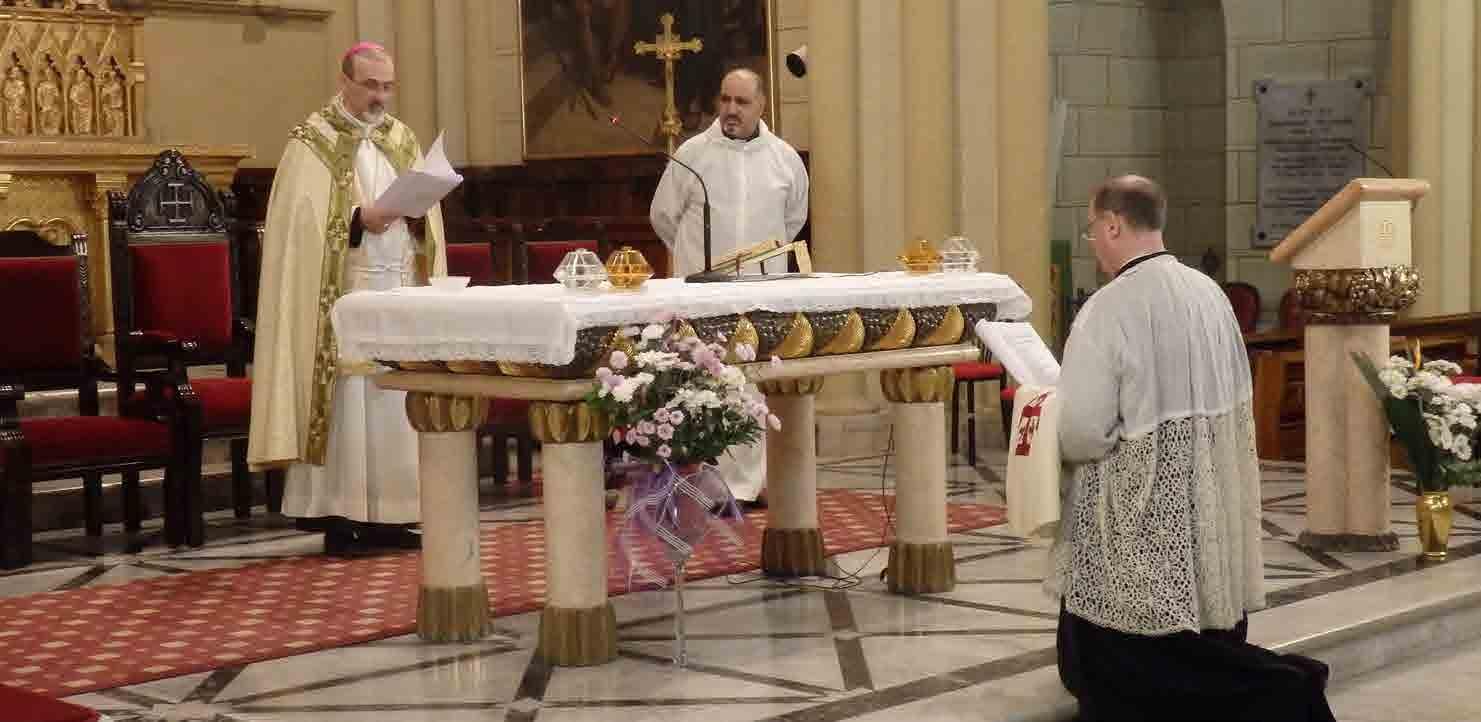
4 minute read
A traditional pilgrimage to the Holy Land
Report by Canon Martin Edwards
One of the Five Pillars of Islam is the Hajj – the duty imposed on the observant Muslim of making the pilgrimage to Mecca, should circumstances allow. It is a shame that so many Catholics, who think nothing of treating themselves to several foreign holidays a year, never consider making a pilgrimage to the Holy Land. Some, of course, are put off by reports of violence and terror in the region: a largely groundless fear - at least in the pilgrims’ places. The Israel government might be faulted for many things, but could not be accused of not taking security seriously. Some Traditional Catholics are put off by fears of what might await them liturgically in the various shrines and holy places. This concern is not groundless. Indeed, it was what prompted a group of Traditional Catholics to arrange a pilgrimage to the Holy Land in November 2017. We called the pilgrimage “In the Steps of the Master” and we decided to have only the Usus Antiquior each day.

Pilgrims join in Latin Vespers in front of the altar of the Nativity in the Basilica of Bethlehem
The Latin Mass Society kindly publicised the pilgrimage on its website, and Dr Joseph Shaw, LMS Chairman, graciously mentioned it on his estimable and widely-read blog. As a result, we collected a total of 36 pilgrims - a number that pleased Pax Travel, the tour company which made the practical arrangements. As Chaplain, I took the decision not to mention to the ecclesiastical authorities in the Holy Land, in advance, that our Masses would be exclusively in the Old Rite. After all, it is now ten years since Summorum Pontificum : and our group, made up of Traditional Catholics, perfectly fulfilled the criteria for celebration of the Extraordinary Form. We had a perfect right to the Mass of Ages. However, I thought it prudent not to risk refusal. Our Masses would come as a surprise. And so they did. Usually a pleasant one.

Ad orientem - Priest and people face together towards the Temple Mount in Jerusalem during Mass in the Church of Dominus Flevit
Our first Mass, appropriately enough, was in Bethlehem. The chapel was brutally modern; the Mass beautifully ancient; and we had carols before and after thanks to a talented organist, Mr James Barton, from the British Embassy in Amman, who joined our group. During that first Mass a young Franciscan entered the chapel, and noted that we had accomplished some deft liturgical reordering (of the good kind). This caused a discernible frisson of concern – the Franciscans administer most of the shrines in the Holy Land. However, after a few minutes he nodded his head in an authoritative manner, and said, loudly enough to be overheard: “This! This is the True Mass! The True Mass!” I did not feel like disputing that statement.

The Pilgrimage Chaplain is installed as an Honorary Canon of the Holy Sepulchre by Archbishop Pizzaballa on 11 November 2017 - the feast of St Martin
We were fortunate enough to have the services of an excellent altar server, Mr Jeff Bedia, a Knight of the Holy Sepulchre, former MC at St Matthew’s Cathedral, Washington DC, and now a Brother of the Oratory in Formation in that city. Mr Bedia tactfully, forcefully and swiftly arranged the sanctuary and altars in the various places we had Mass, while I was vesting in the Sacristy. This usually involved moving sundry pot plants, prayer mats, pious objets d’art, crucifixes, microphones and more pot plants.
Only once did we meet with resistance in the form of a beautifully dressed “neo-con” seminarian from Brazil who, as part of his seminary formation, was undertaking a placement in Nazareth, and had been put in charge of the sacristy in the Basilica of the Annunciation. He tried to insist that I used the Novus Ordo - even while Mr Bedia was busy moving the pot plants from in front of the High Altar. Fortunately, I had just been created a Canon of the Holy Sepulchre by Archbishop Pierbattista Pizzaballa, the Administrator of the Latin Patriarchate of Jerusalem - and I pulled rank. Firmly. I told the (beautifully dressed) young man that he was a visitor in a diocese of which I was a senior cleric, and he had better look sharp if he wanted to stay on. That worked, and the Usus Antiquior triumphed.
It was an extraordinary privilege and blessing to celebrate the Extraordinary Form in Bethlehem, Nazareth, Jerusalem, and on the banks of the River Jordan at the traditional stop where our Blessed Lord was baptised; on the slopes of Mount Carmel; and on an outdoor altar on the Mount of Beatitudes overlooking the Sea of Galilee.
Readers of this magazine should know that something called the Status Quo Arrangement exists in those shrines which the Catholic authorities share with other Christian denominations. This means that nothing can be changed liturgically, and forms that we fixed in the 19th century must be maintained. As a result, many of the prayers and practises which were ditched in the West after the reforms of the Second Vatican Council, flourish, of necessity, in the shrines of the Holy Land. Thus we had the joy of attending processions, Vespers, and other services, all sung and celebrated in Latin and Gregorian Chant. These services take place on a daily basis. It was an added joy that the clerics and religious were (nearly) always correctly attired in cassock or habit.
I would urge all faithful Catholics who are reasonably able bodied (some fairly strenuous walking is required) to consider a pilgrimage to the Holy Land and, with the geopolitical situation standing as it now does, to do so sooner rather than later. I would certainly be more than happy to lead another Traditional Mass pilgrimage. The Hajj may not be an obligation for the Christian; but no one who has Walked in the Steps of the Master in the Holy Land will ever forget the experience, or ever encounter the Lord in His Holy Word in quite the same way again. Next year in Jerusalem?










